There's no shortage of strange substances we've adopted into our diets for the sake of our health. The clean eating craze has brought a renewed focus on food in its most basic form, which is definitely not a bad thing!
It has also put the spotlight on some extra herbaceous fare that's chock-full of vitamins, minerals, and other properties our bodies love. From mushroom powder to wheat grass, it seems as though the more your food looks like it was just pulled out of the ground, the better it is to eat.
The newest ultra-earthy trend people are gulping down is blue-green algae — or cyanobacteria. This slimy, swampy stuff is supposed to be pretty good for you; it helps treat inflammation, it boosts your immune system, and it claims to help you lose weight.
But is blue-green algae actually as beneficial as some claim it to be? And are those benefits worth the substance's extra strange taste? What's the difference between the algae you ingest and the stuff you read about in the news?
As an adventurous eater who is always curious about whether health trends are up to snuff, I was eager to find out myself — by shooting down tiny bottles of the stuff for an entire week.
What Is Blue-Green Algae?
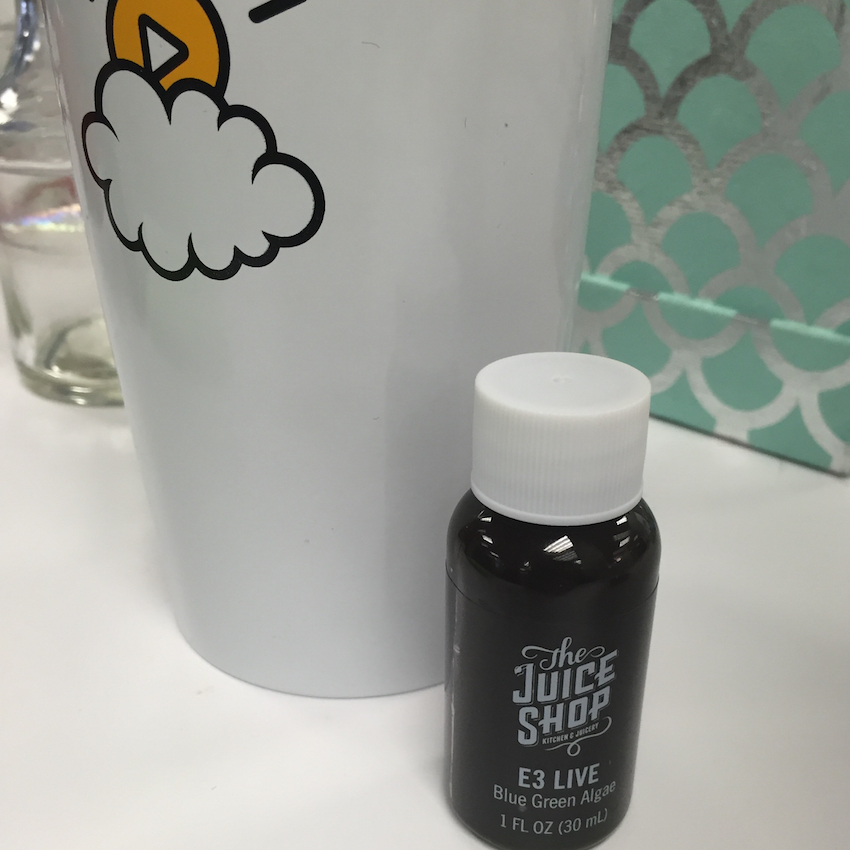
Blue-green algae is a substance found in ponds all around the world, and apparently it's one of the world's oldest living organisms. There are two types of algae according to the Global Healing Center — Spirulina, which is the more populous plant, and Aphanizomenon: found in a special lake in Southern Oregon. Apparently, it is dense with nutrients and vitamins like its land-plant counterparts, so people started picking it, drying it, and turning it into easily ingestible powders or capsules.
Health Benefits Of Consuming Blue-Green Algae
Many different outlets have praised blue-green algae as an edible way to keep cancer at bay. It is also apparently a weight loss aid that can also enhance your immune system, ease anxiety and prevent fatigue. With all these amazing allegations, I was eager to see if shooting the stuff for a whole week would ease my stress and make me feel less tired.
Health Risks Of Consuming Blue-Green Algae
If you google blue-green algae right now, you will get equal amounts of health articles singing its praise and statements released from various state parks departments warning about incredibly harmful blue-green algae blooms taking over ponds. This is understandably confusing, considering it is about the same substance. According to WebMD, "Contaminated blue-green algae can cause liver damage, stomach pain, nausea, vomiting, weakness, thirst, rapid heartbeat, shock, and death. Don’t use any blue-green algae product that hasn’t been tested and found free of mycrocystins and other contamination."
The algae you eat should have been tested, grown, and treated to make sure it doesn't contain any harmful toxins — but don't assume automatically that the algae you buy has been. Do your research on any algae product before eating it.
Blue-Green Algae Supplements
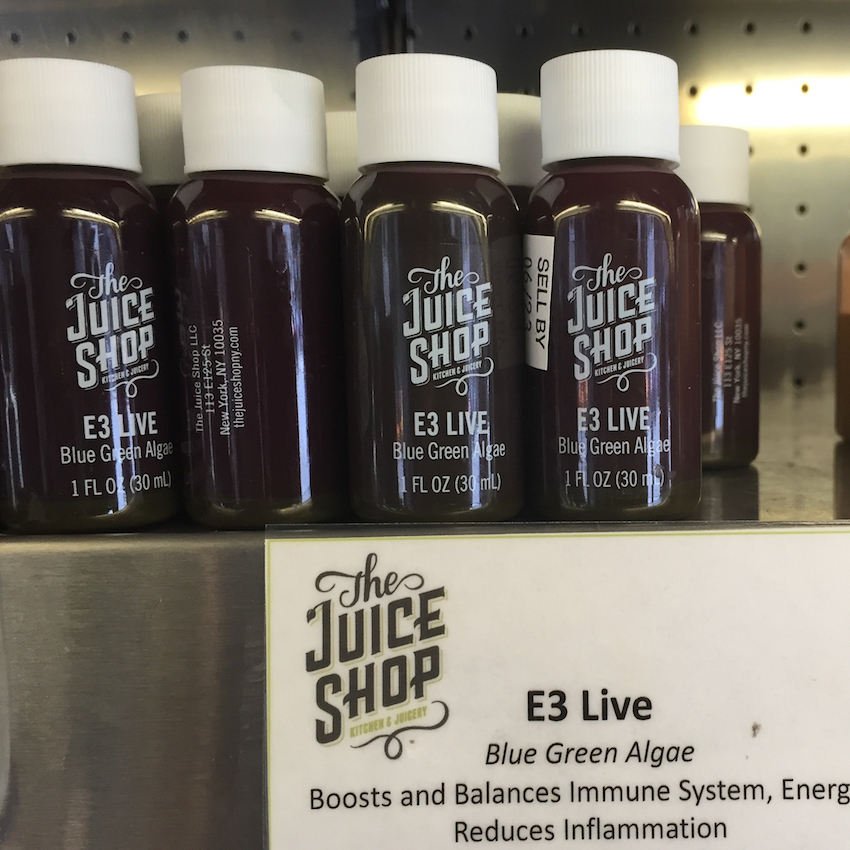
Blue-green algae can be consumed in many forms, the most popular being an easy-to-swallow supplement. It is also sold in little frozen pouches, or in drinkable shots — like the ones I used.
As stated before, make sure that the brands selling these supplements followed the proper rules and regulations required to make them safe.
The teeny tiny bottles that I gulped up were from a Juice Shop near my office. Prior to tasting, I had already been warned about the… distinct flavor. Check down below to see if my week of chugging pond plants was worth the benefits.
Day 1
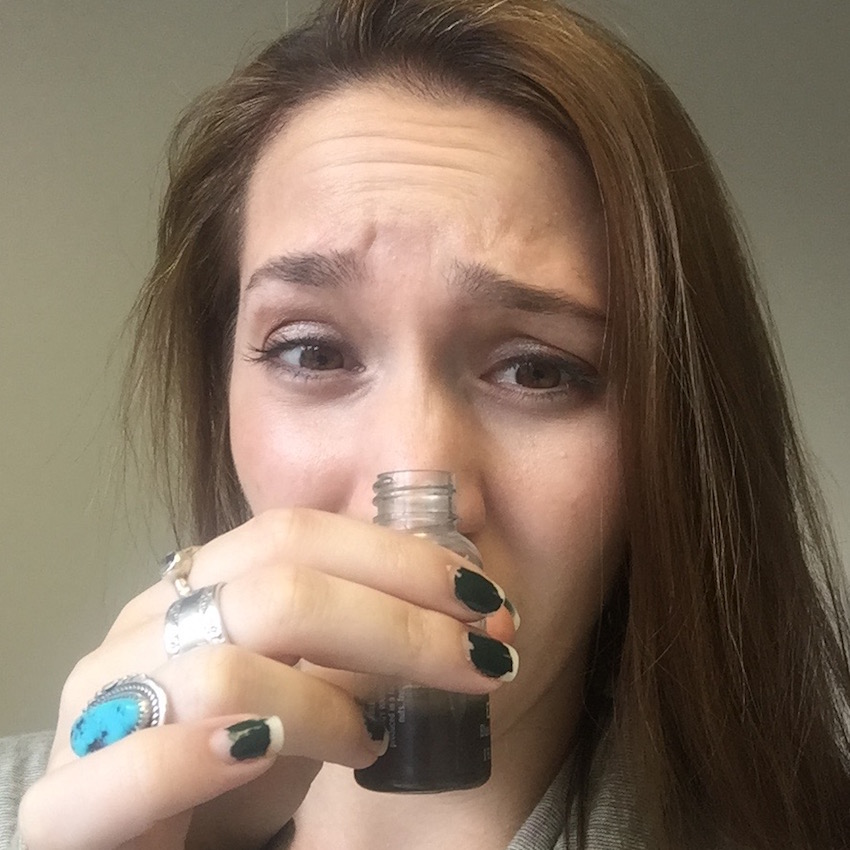
After hearing about its distinctively awful flavor and reading polarizing points-of-view online, I was admittedly hesitant about my week-long, blue-green algae immersion. But since they are sold in teeny tiny bottles, displayed beside other healthful shooters inside a decidedly trendy juice shop, I decided to put aside any fears of liver toxicity or turning into a swamp monster.
I purchased a deep green shot and headed back to the office, eager to see if the taste was really as unpleasant as promised.
I consider my palate to be pretty adventurous, so I wouldn't say it was the most vile flavor I've ever tasted. But shooting the blue-green stuff was far from enjoyable. It's extra herbaceous and thick — almost like it was pulled straight from a pond. If you've ever wondered what scraping the green gunk that forms inside aquariums would taste like, it would taste like this. The first sip really had me pondering how the benefits could possibly outweigh the taste.
Day 2
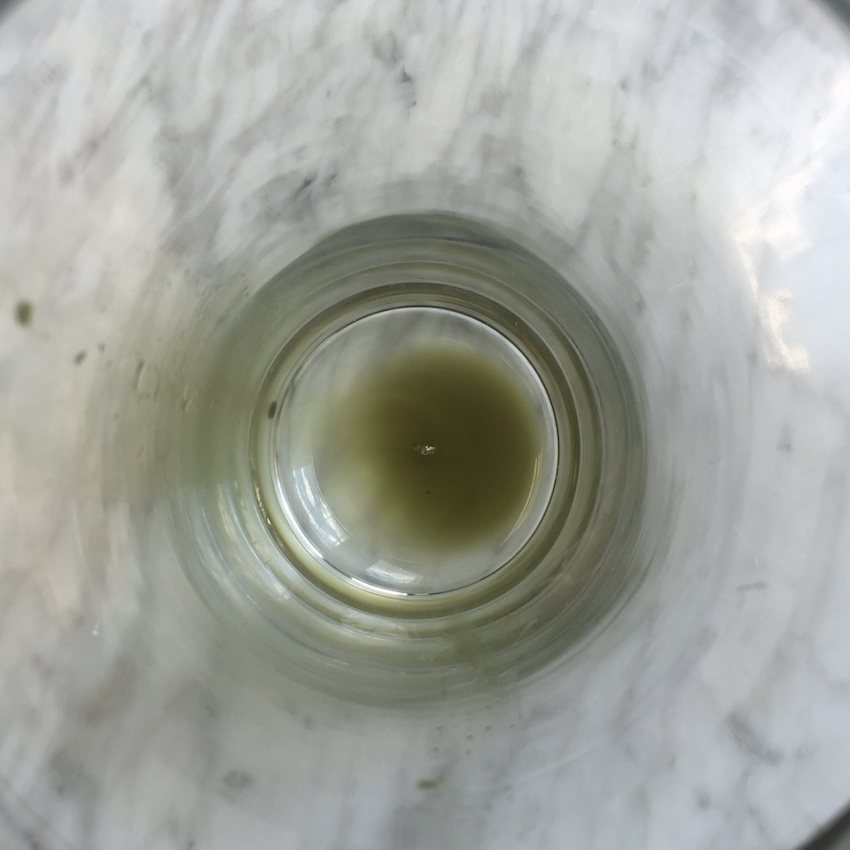
I went into the second day trying to think positively. Perhaps blue-green algae's grossness was a taste I would slowly get used to — or come to enjoy. This lasted right up until I took the second shot and was greeted with the same nauseating taste and consistency.
The aftertaste lingered in the back of my throat while I typed away at my desk for the rest of the day. I tried to distract myself by checking in with my body; had my midday weariness and stress level improved? I couldn't detect a difference, but perhaps the blue-green algae had yet to take effect.
Day 3
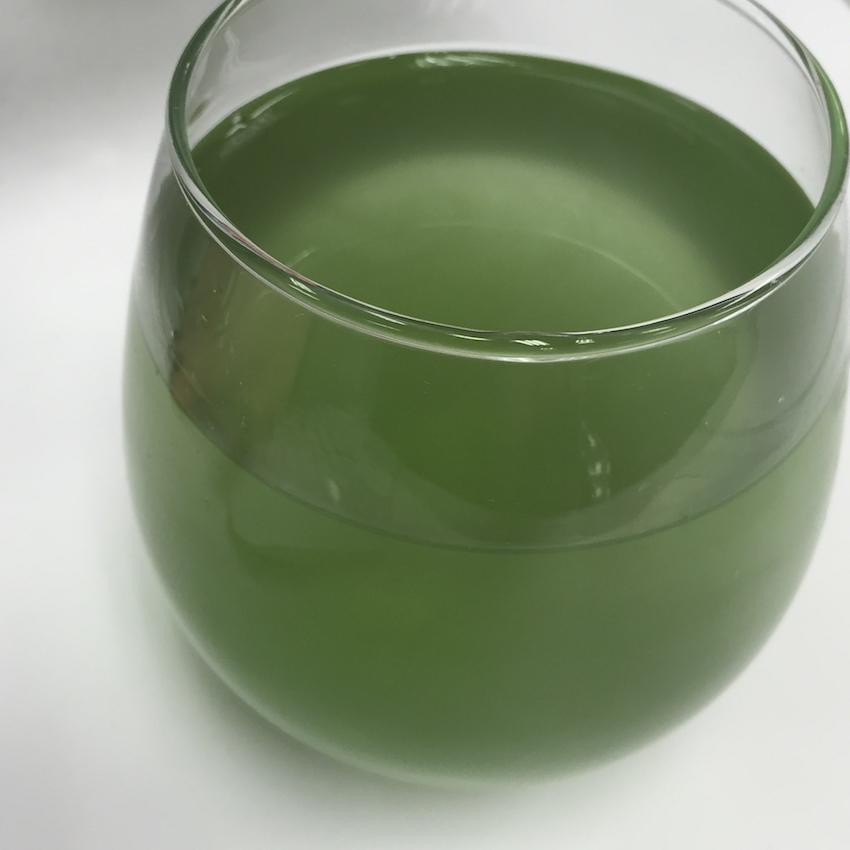
On the third day, I had an epiphany and tried watering down my green gunk so it wasn't as potent. I knew the pungent taste of blue-green algae wouldn't be easy to hide. It's pretty salty, so hiding it in a latte — as one might with matcha — wasn't really an option.
I opted for pouring it into a glass of water instead. Admittedly, it did get rid of that dastardly thick texture, but the taste remained as earthy as ever.
Day 4
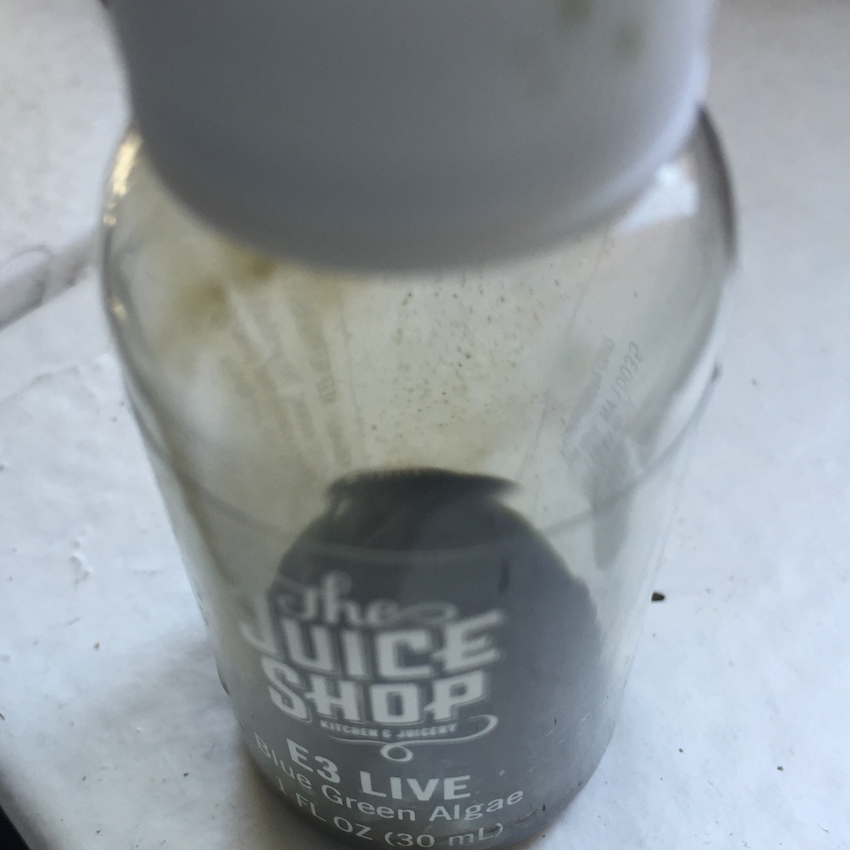
After deciding that slowly drinking diluted algae produced just as many subtle dry heaves as a single, concentrated shot, I went back to quickly gulping it down. Weekend wellness is generally tough to gauge, because my sleeping patterns are different. How many Zzz's I catch definitely dictates my anxiety.
Today, I decided to sleep in even though I usually prefer waking up early, regardless of what day it is. My laziness created a cloying feeling that I had snoozed the day away, which, in turn, brought on a lot of stress. That is my fault — not my gross, green pond-scum companion's.
Day 5
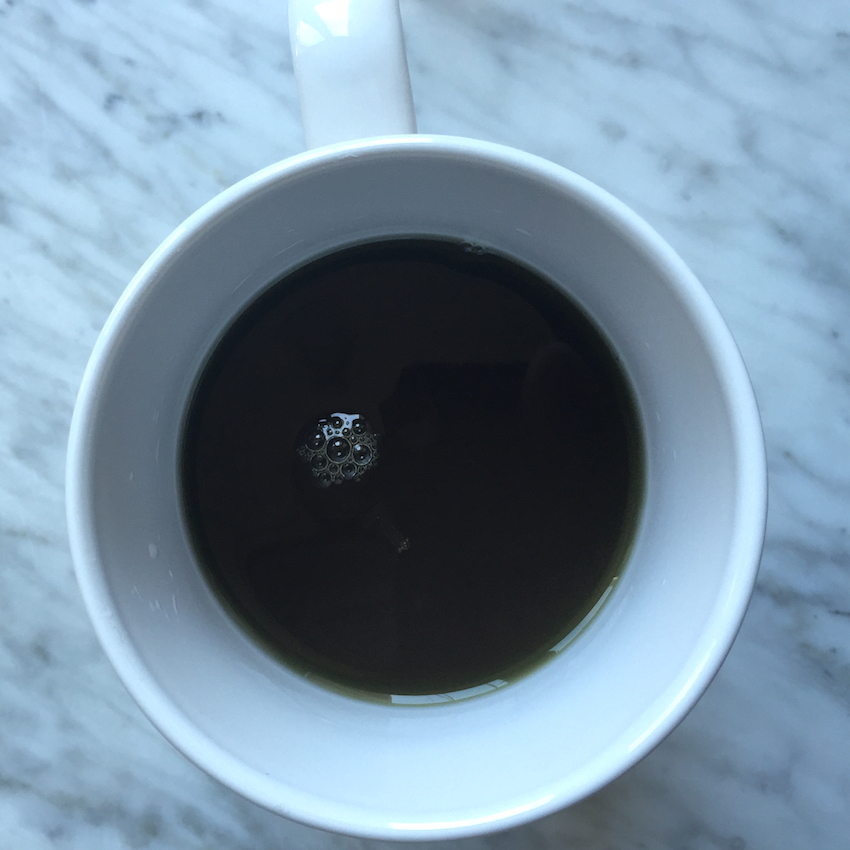
Being back on the work grind brought renewed vigor to my cause. Maybe blue-green algae still had a chance of becoming my new favorite wellness resource.
After swiftly sipping my swampy shot, I had to admit, I did feel pretty Zen and high-spirited. Could it be the magical blue-green algae health benefits were finally making themselves known? Or was I just having a great day?
Day 6
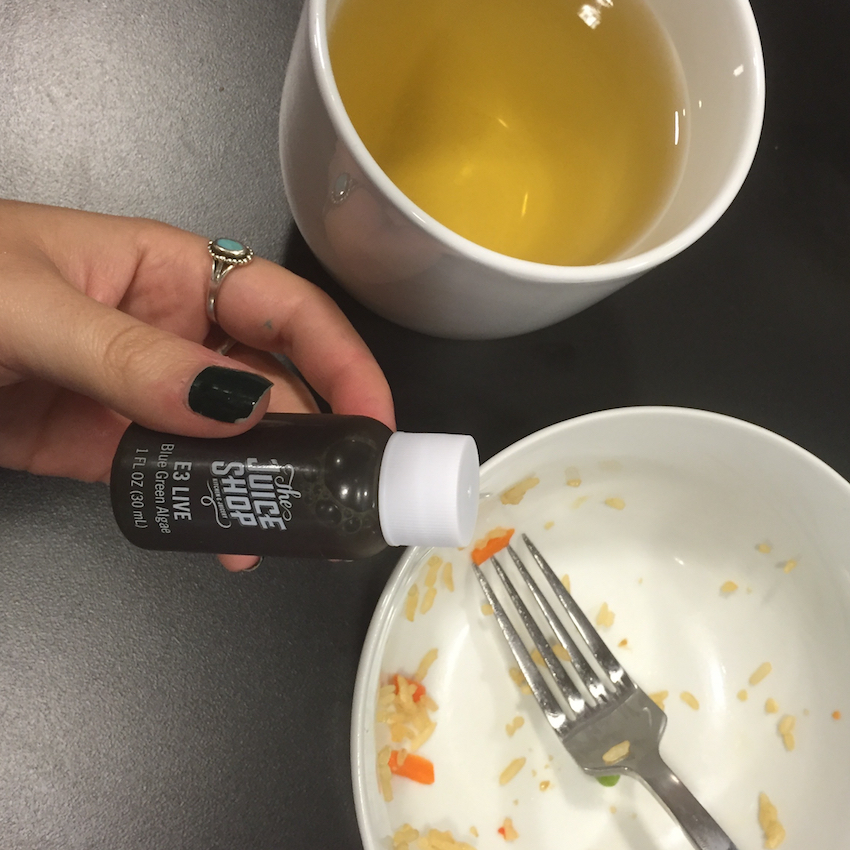
The next day was pretty dreary in every capacity. But blue-green algae doesn't care whether you're in the mood to drink it or not. I shot it down in the middle of lunch so that the taste could be masked by what I was eating.
I couldn't glean much from my mood or energy levels afterward. They seemed all right, but not notably so.
Day 7

I had hoped that by this point in the week I would be a blue-green algae-swilling super-mermaid. But I was still wincing just as noticeably as I was the first day.
Do I detest the terrible taste-texture combo? Let me count the ways.
Wellness always comes at a price. But blue-green algae's price is a steep one to pay, with only marginal health benefits that include improvements to mood and fatigue.
Final Thoughts

Alas, there is not much mystery when it comes to what I think about blue-green algae. There are plenty of superfoods out there that are a bit funky but have amazing health benefits. In my opinion, this is not one of them.
Blue-green algae seems pretty polarizing — some seem to love it while others don't think it's worth the hype. The added risk that comes with an unregulated batch of algae also makes me wary of ever making it a dietary habit — not to mention that texture!
But this is just my opinion and many others would argue differently. If you decide to try this "health" trend yourself, just remember that you've been repeatedly warned about the taste!
If you found this review hilarious or helpful, make sure to SHARE it with friends and family on Facebook.




